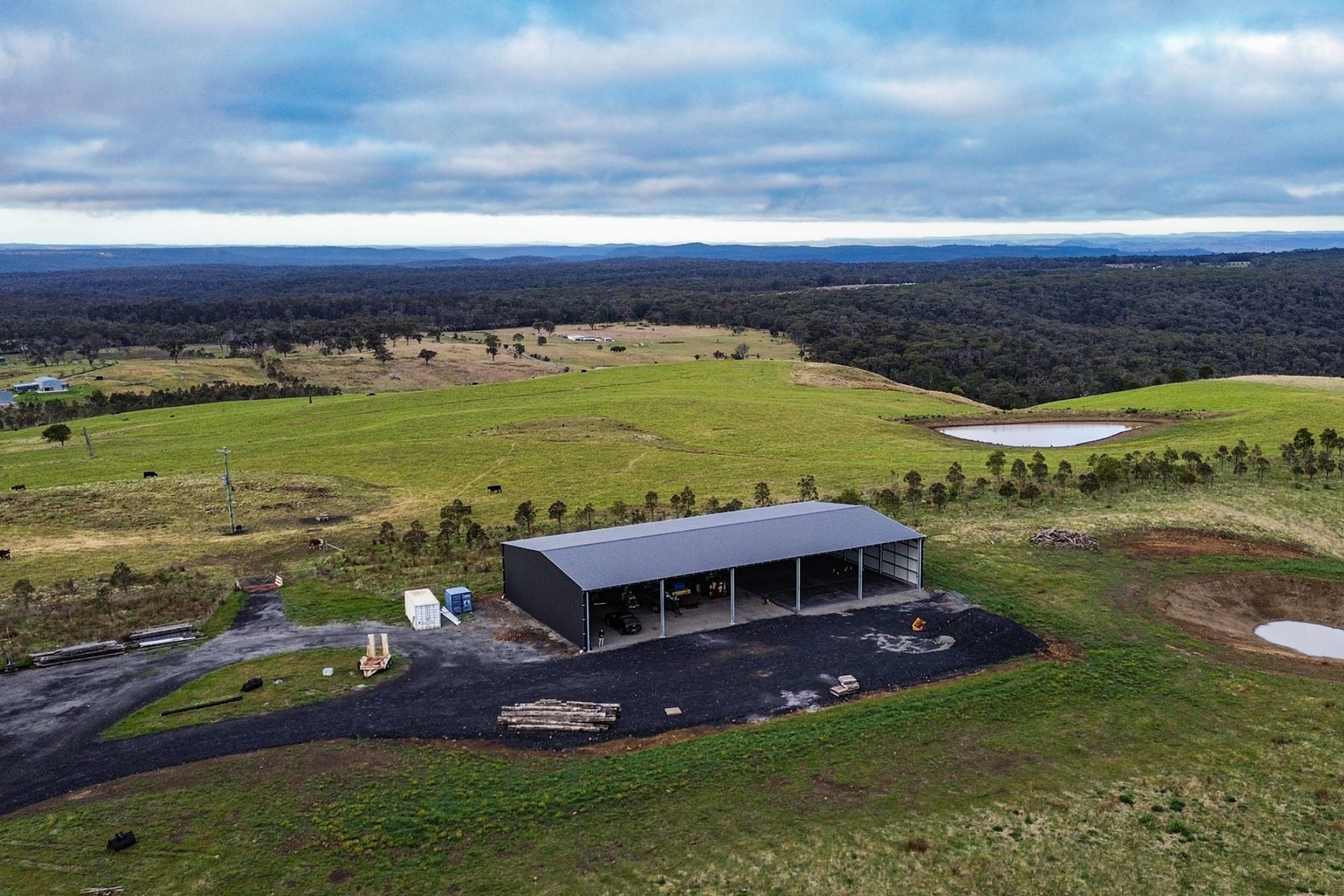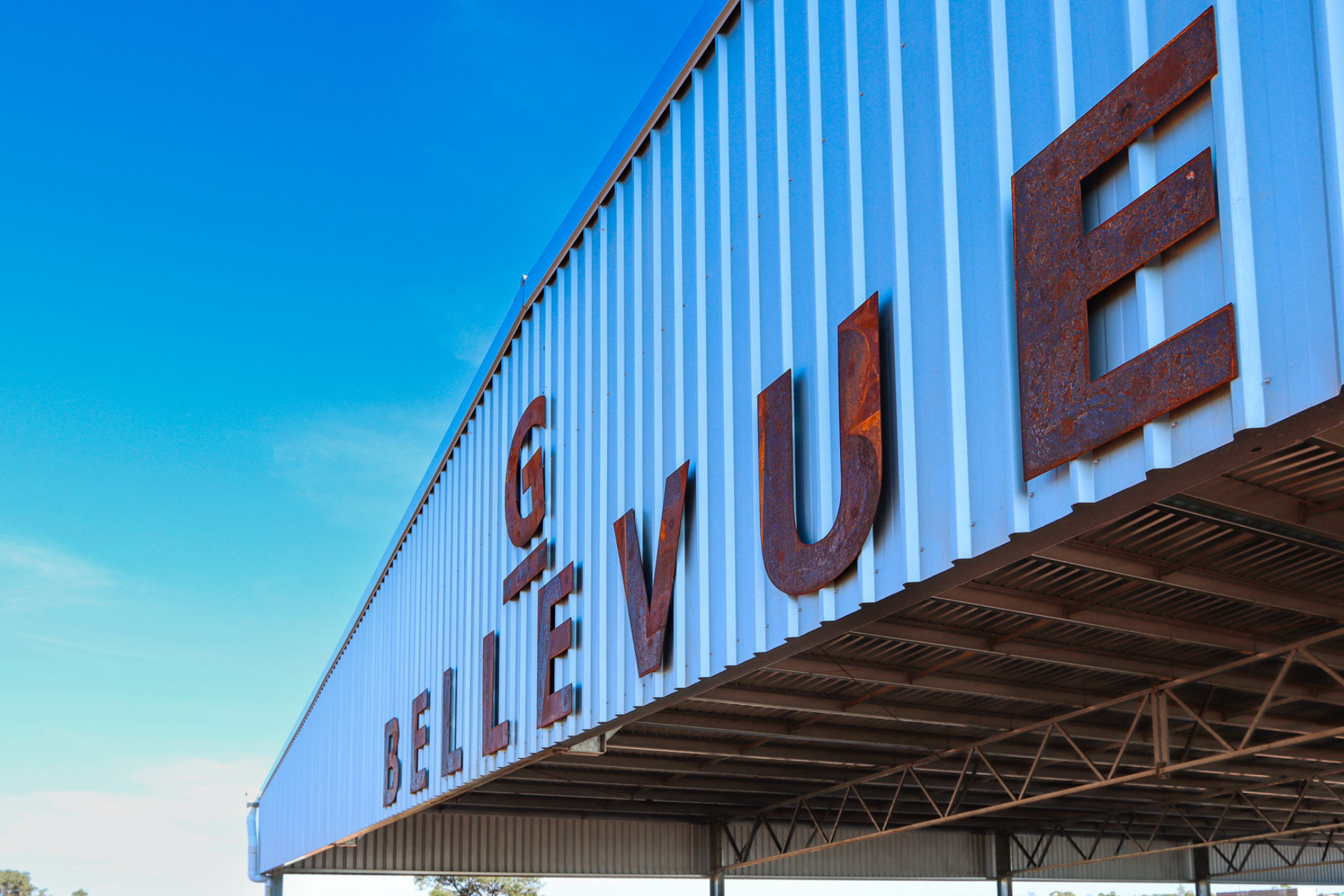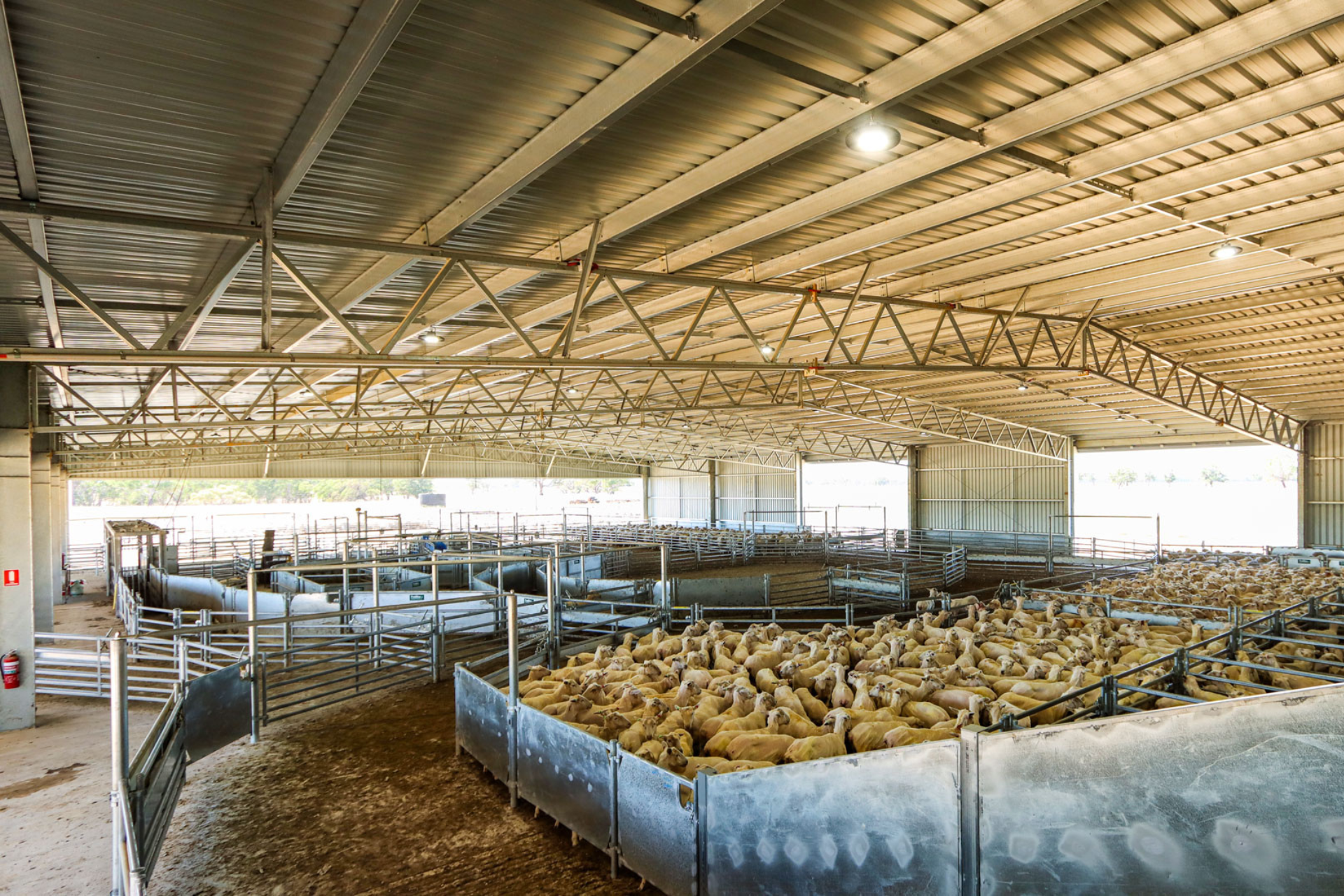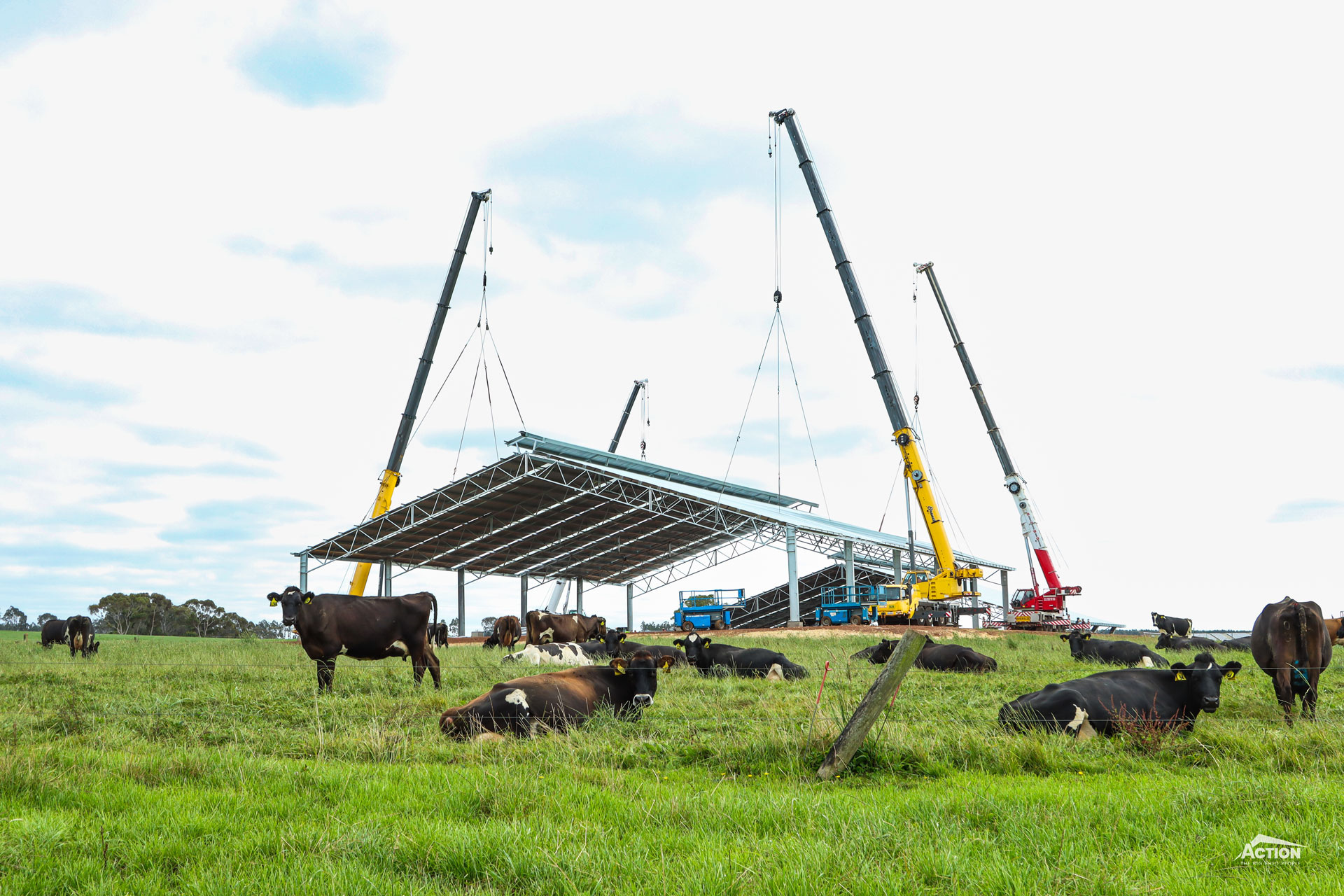What are the shed cladding options for my new shed? Should I choose Trimclad or Corrugated Iron? Should I Choose Colorbond or Zinc?
These are all common questions from customers when they are embarking on a new farm shed build.
There are several options available for shed cladding and there are a few details to keep in mind.
In some cases, there may be an obvious best choice of shed cladding for your project. For example, there may be existing shed infrastructure or tanks that you would like to match your new shed in with.
In other cases, it may not be as straightforward and the decision may depend on factors like your budget, the shed use or council requirements.
In this article, we discuss everything you need to know about shed cladding.
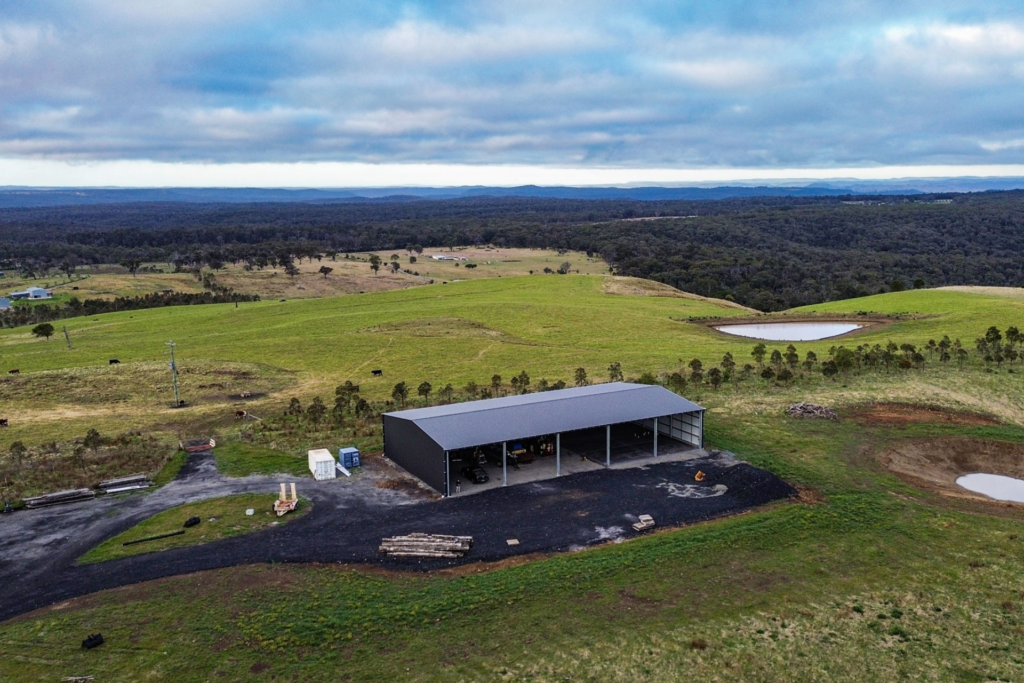
What Shed Cladding Options Are Available?
When it comes to shed cladding options there are two subcategories to consider. These are the shed cladding protecting coating and the shape of the shed cladding profile.
The protective coatings available for your shed cladding are
- Zinc Cladding
- Colorbond Cladding
- Galvanised Cladding
For cladding profile, there are two main options: Trimclad or corrugated iron
Keep reading to learn all about these options such as the pros and cons and why they could be a good fit for your project.
Trimclad Versus Corrugated Iron
Trimclad® is a versatile roof and wall cladding featuring trapezoidal ribs and subtle fluting in the pans. It is ideal for a wide range of applications including farm sheds.
One advantage of Trimclad® is that the cladding can span around 20% further between purlins than corrugated iron. Trimclad® is also by far the most popular of the two cladding profiles, simply due to its more modern appearance.
The classic corrugated iron is a strong and versatile roofing and walling material. Having been in use since as early as the 1840s, any shed built beyond a decade or more ago will most likely be clad with it.
This is often why corrugated iron is used for shed cladding – to match up with other corrugated iron sheds or rainwater tanks that may be nearby. While purely a matter of aesthetics, this might be the deciding factor, so, keep this point in mind and ask yourself what will look best on your farm.
Colorbond Cladding Versus Zinc Cladding
Zincalume®, also known simply as zinc cladding is the most common cladding choice for farm sheds.
Zincalume® is a very durable metal – a combination of aluminium, zinc and silicon. Other advantages of zinc cladding include:
- The activated aluminium coating on Zincalume® makes it tough and highly resistant to scratches during transport and installation and in weather conditions such as hail.
- Zincalume’s durability means it rarely needs replacing which has obvious cost-saving advantages as well as being environmentally friendly.
- Recyclable.
- Zincalume® is a cost-effective option, compared to Colorbond®, which helps when you are working to a budget but don’t want to compromise on quality.
- Easy care and minimal maintenance, saving both time and money.
The main disadvantage of Zincalume® can be its appearance. The shiny aluminium aesthetics of Zincalume® will often mean that it is not compatible with overlays on a property e.g. nearby airport.
In this instance, Colorbond® cladding can be used. Other advantages of Colorbond® include:
- The wide range of colour options available for Colorbond® provides room to customise a project or to match any existing Colorbond® buildings.
- Provides an additional layer of corrosion protection for highly corrosive environments such as dairies. This is why it is a popular option for loafing barns and calving sheds. It is also recommended to choose Colorbond cladding if you are building your shed in a coastal area.
Price is the most significant downside to Colorbond® as it is more expensive than other steel cladding materials available.
As an alternative, you could consider galvanised cladding as this provides many of the same corrosion protection benefits. This is also commonly used for farm sheds including hay sheds and dairy shed infrastructure.
The Verdict – Which Farm Shed Cladding Should I Choose?
For the majority of farm shed builds zinc cladding is a practical and cost-effective option.
1. What is your budget? Keep in mind that Colorbond® cladding does cost more than zinc cladding, while Trimclad® is typically the same price as corrugated iron.
2. Is there existing infrastructure to match in with? This could include sheds or tanks.
3. What is the shed used for? For shed projects such as dairies, calving sheds and loafing barns, Colorbond® can be the best choice.
4. Are there any council overlays that will determine what cladding is required? If you aren’t sure whether this is relevant to your shed project, speak with one of our building consultants.
5. What is your personal preference? Sometimes these decisions can simply come down to which option you prefer.
So, that’s a summary of farm shed cladding! We hope this article has been helpful.
View more articles like this in the Learning Hub and submit a REQUEST A QUOTE form to receive an obligation-free quote – or call us on 1800 687 888.

